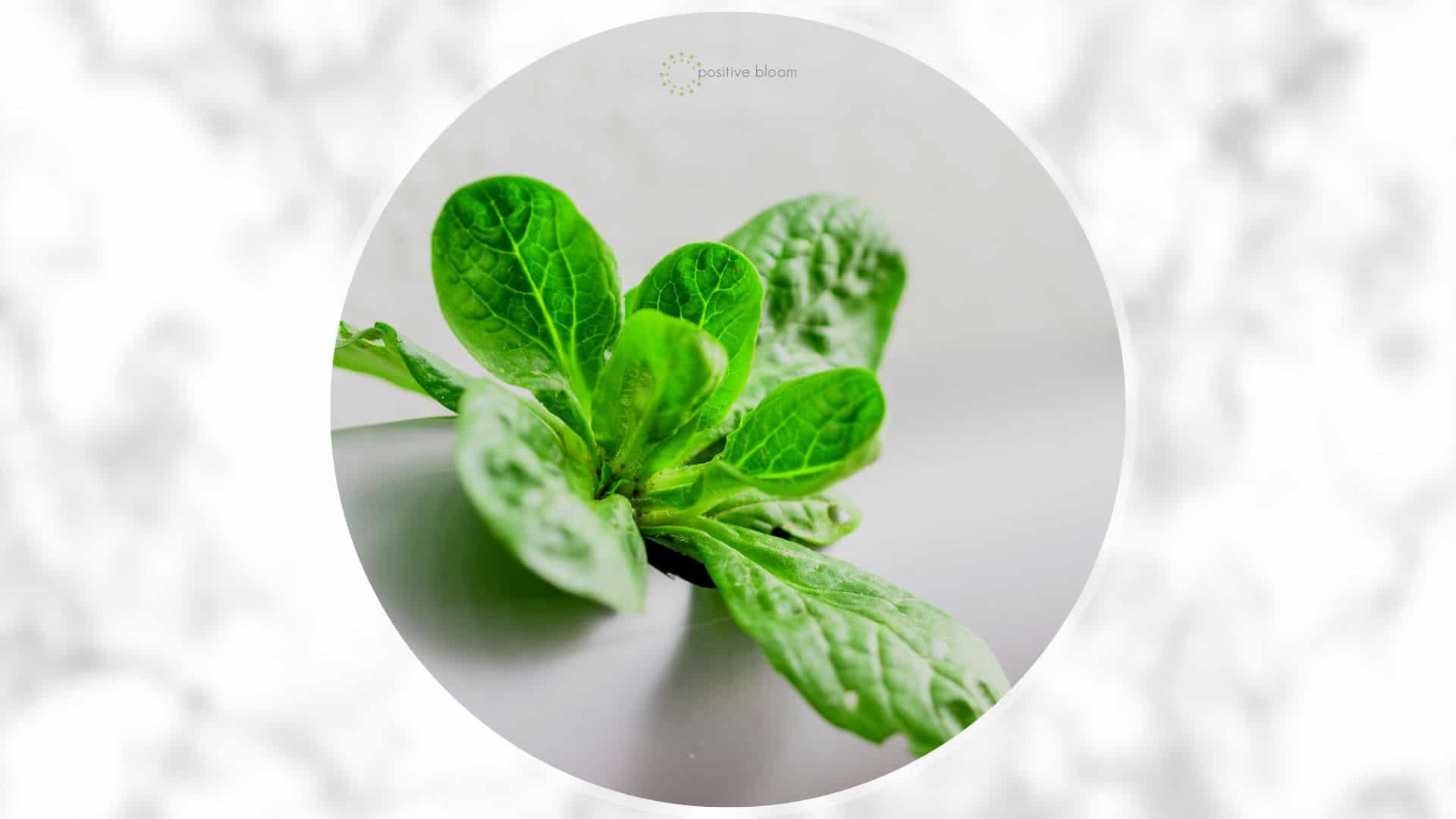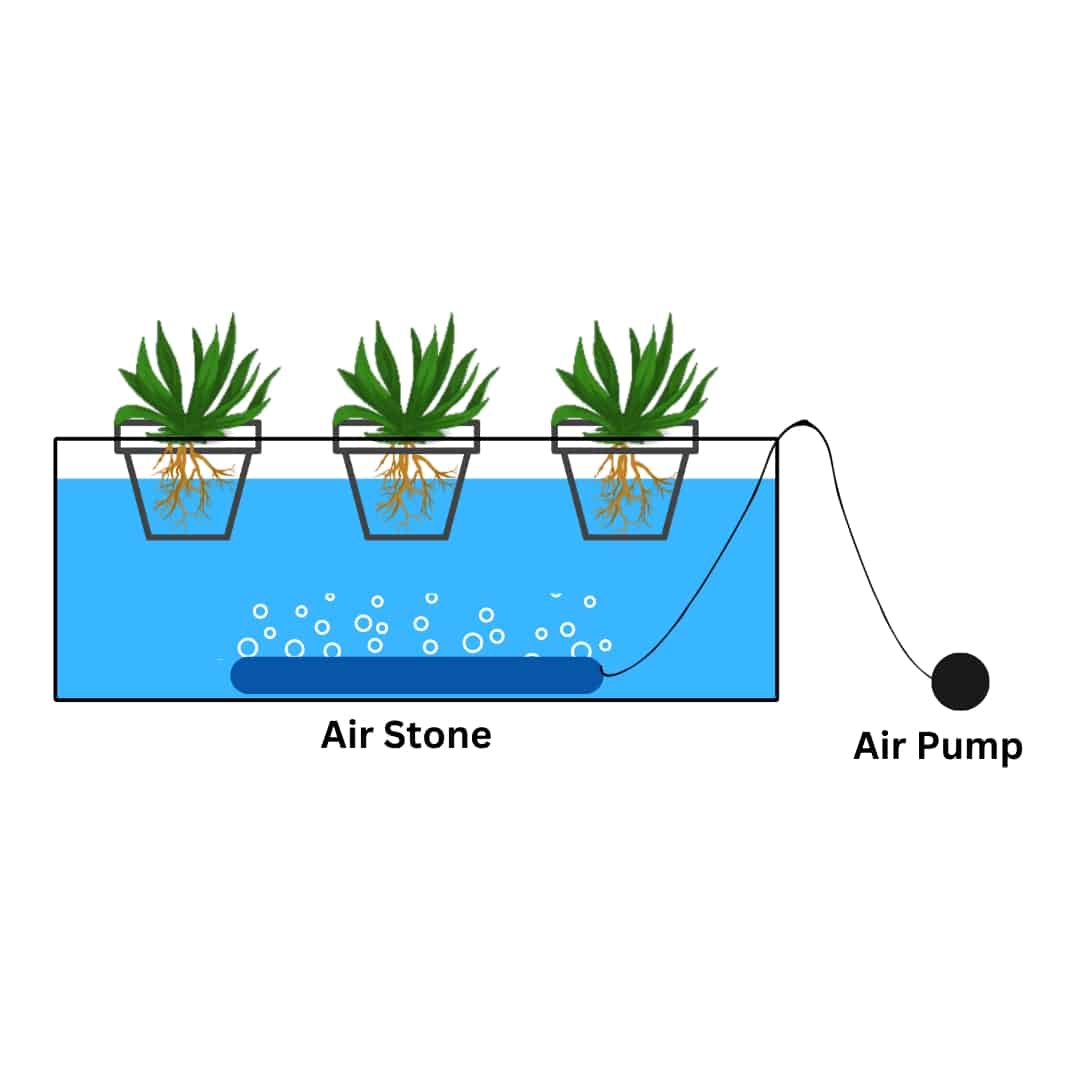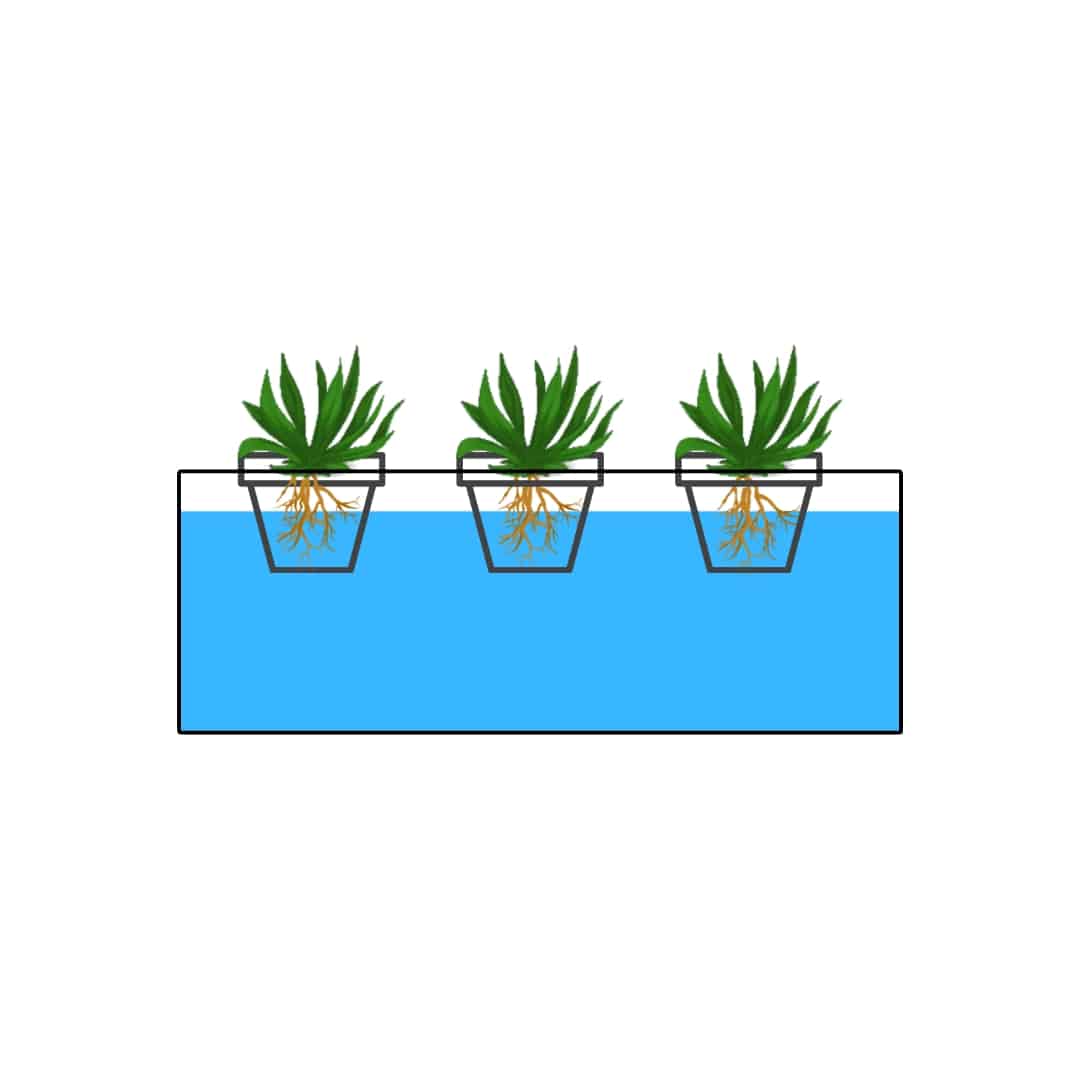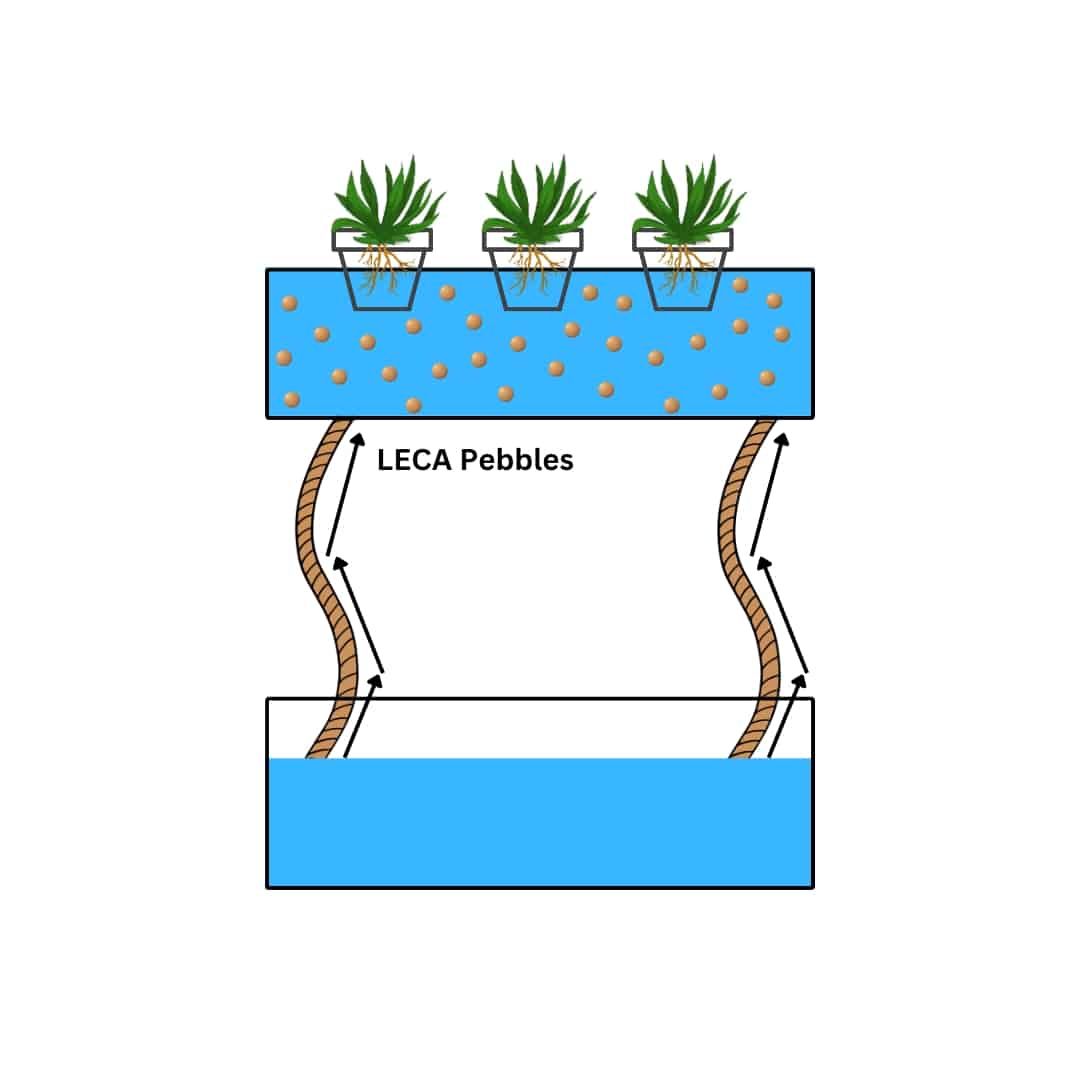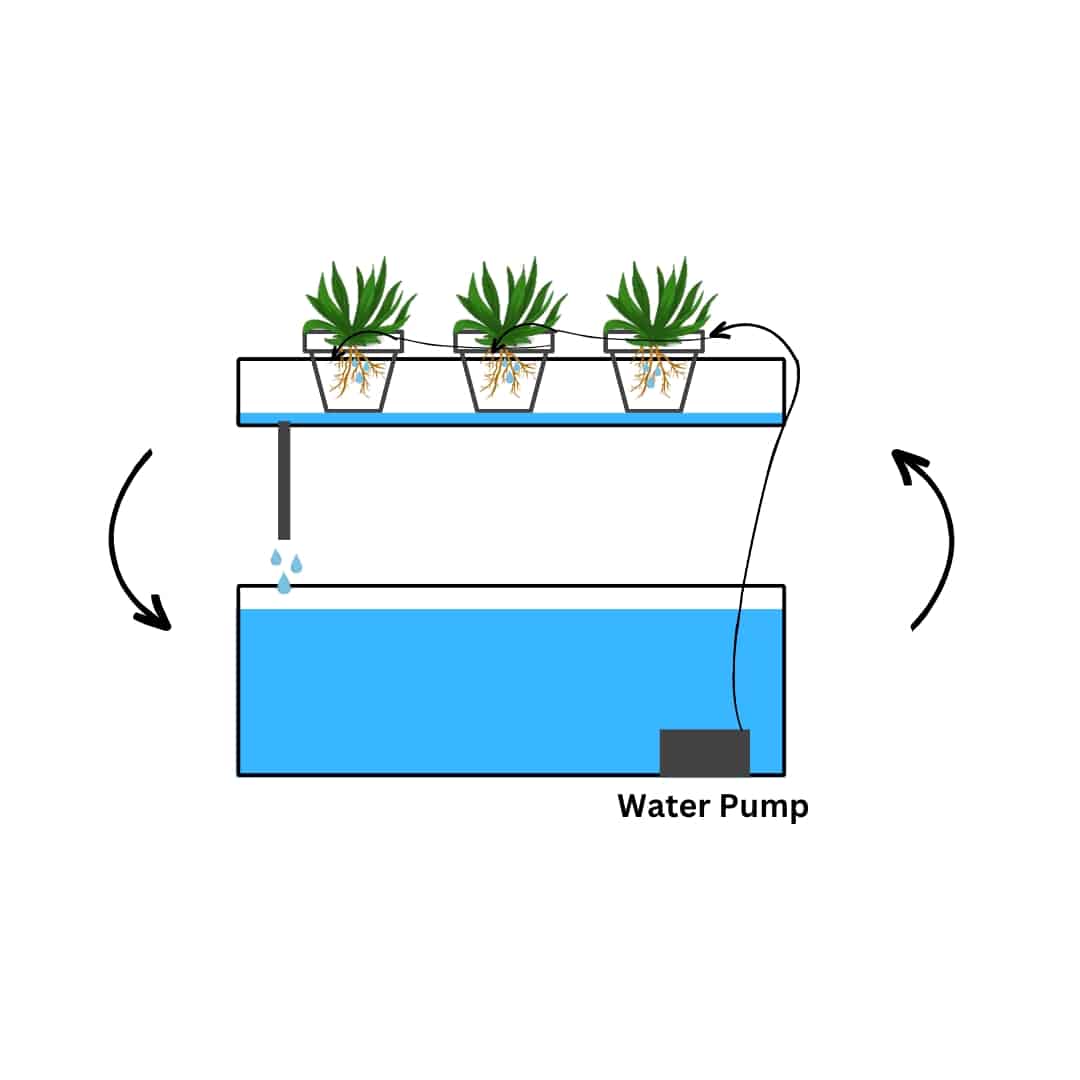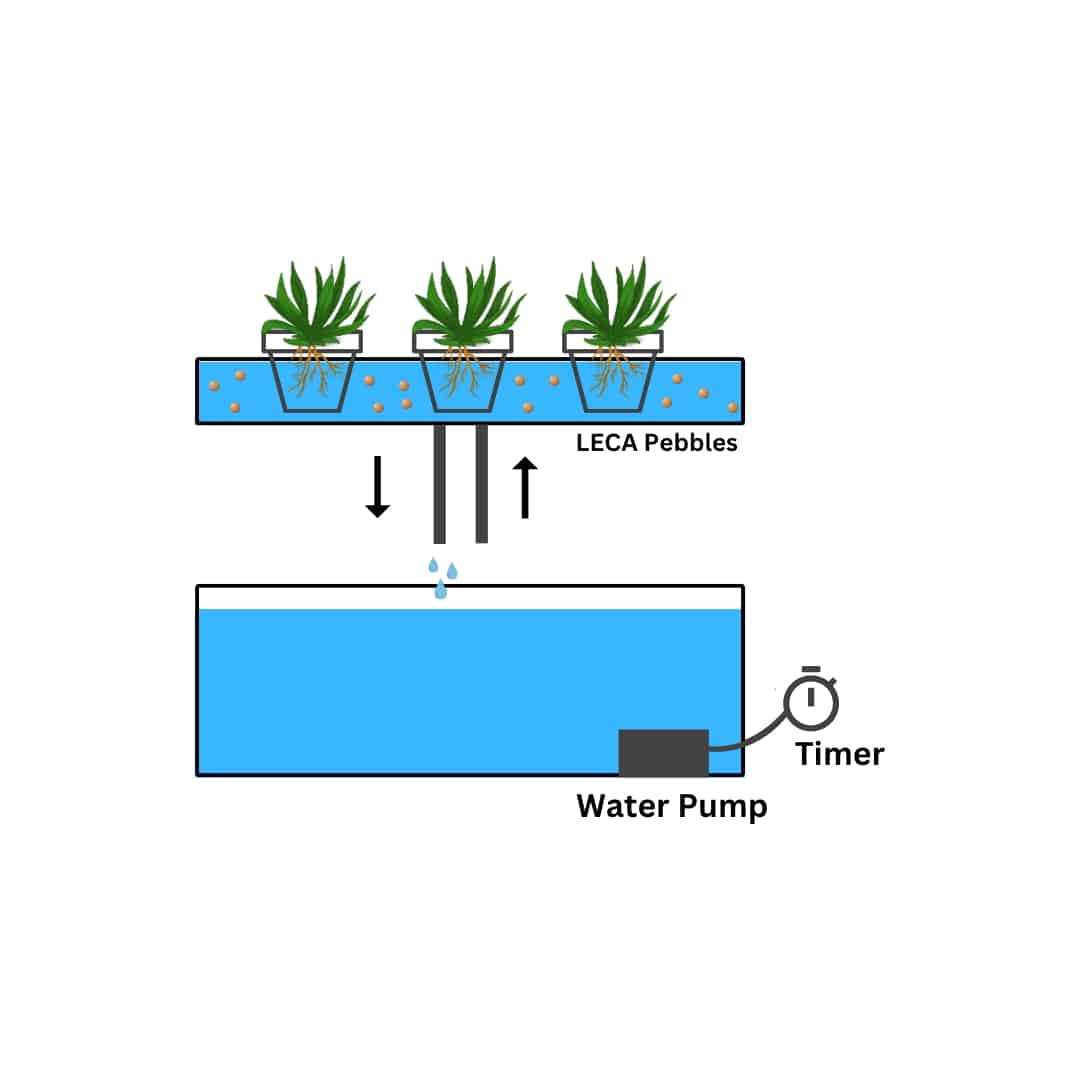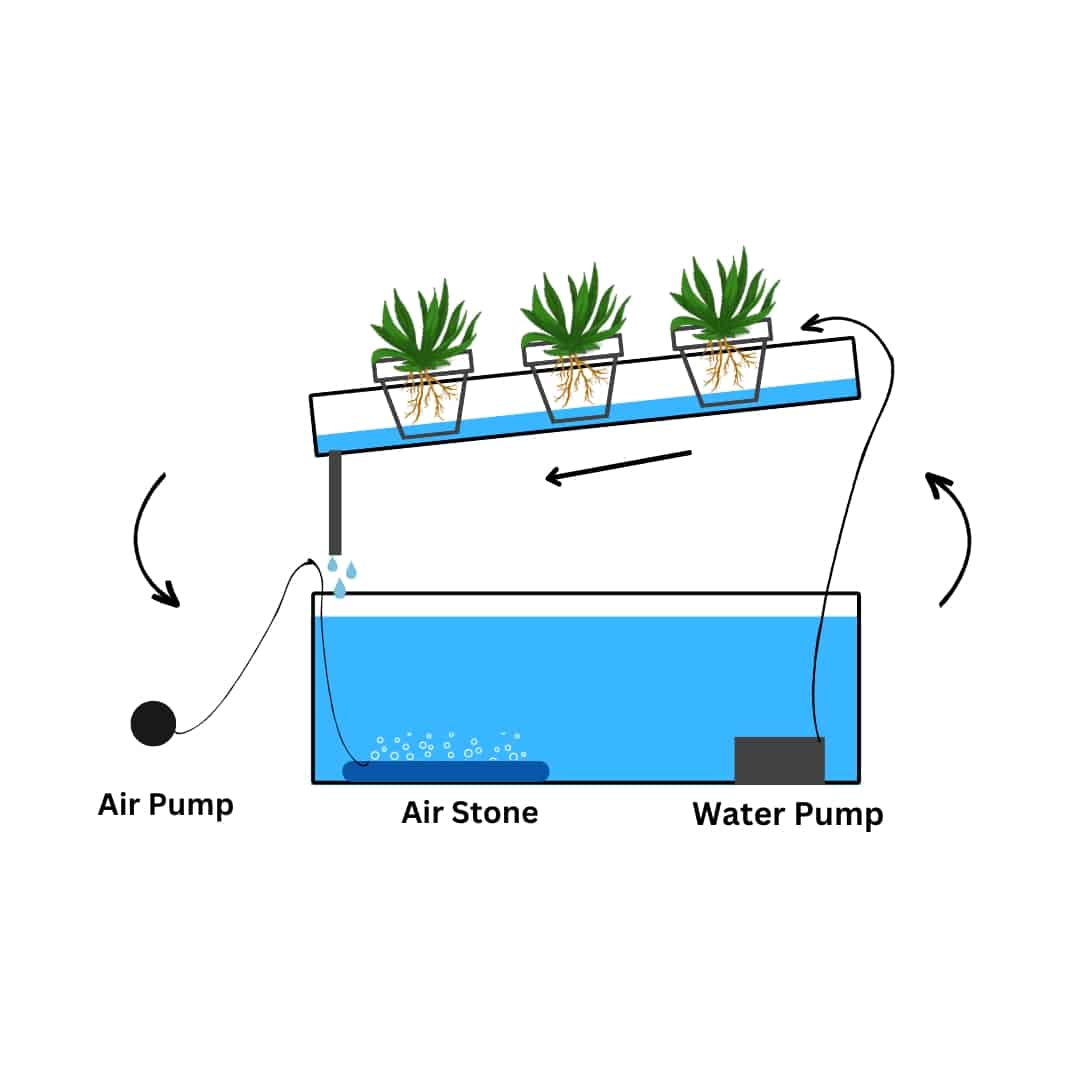Choosing the best hydro system might be a bit difficult, especially if you’re only just starting out with this type of farming.
To help you out, we decided to describe six different types of hydroponic systems so that you can choose the best one for your needs.
The main hydro setups include deep water culture (DWC), nutrient film technique (NFT), drip irrigation, ebb and flow, wick system, and the Kratky method.
They are generally divided into two categories: passive and active hydro setups. Each of these has its benefits and drawbacks, such as requiring more maintenance or not being the perfect fit for some plants and veggies.
We’ve seen that some gardeners even include aeroponics into this branch, but it is slightly different from hydroponics, which we’ll examine in the following article.
Let’s get started!
Passive Hydroponic Systems
Passive hydroponic systems don’t involve a steady flow of the nutrient solution, meaning you won’t need water pumps to take the water out of the reservoir to the plant’s roots and back again.
Of course, these systems have their good and bad sides (actually, hydroponics, in general, has pros and cons), and we’ll mention them and talk about what plants are suited for each setup.
Deep Water Culture
The DWC setup is a passive hydroponic system, meaning there’s no steady flow of the nutrient solution. Instead, the plant’s roots are constantly submerged in the mineral liquid.
This system requires an air pump and air stone to oxygenate the water since there’s never a period when the roots are out of the solution. These pumps and stones, therefore, prevent root rot and keep your plant’s healthy.
Another thing you’ll need for this system are mesh pots in which to place your plants. Ensure that the plant’s roots are hanging from the gaps, and secure your vegetable or flower with marbles, gravel, LECA pebbles, Rockwool, or some similar material to support their growth and hold them upright.
Now I know that the best plants for this setup are small and light ones, but back when I was starting out with hydroponics, I planted my tomatoes in the DWC system and it was a huge mistake. The plant was too tall and heavy, it toppled down, and the stems broke.
But this didn’t stop me! I just switched this technique with the Kratky method because it requires deeper containers, and my plant didn’t top over and break (with a little help from trellising).
Best to use it for: lettuce, kale, cauliflower, and other leafy greens, herbs, and similar
Don’t use it for: tomatoes, corn, potatoes, and similar
[table id=687 /]
Here are some more tips for using DWC for your plants:
Kratky Method
The Kratky method is another passive hydro setup and quite similar to DWC. However, unlike DWC, it doesn’t require an air pump or stone since there’s no need for oxygenation.
As the plants grow and use the liquid, its level lowers in the tank and introduces more oxygen to the plant’s roots.
It is also one of the simplest methods, as you only need a bucket or a deep tray filled with a nutrient-rich solution, and a mesh pot in which to place your plants.
Of course, you do need to support the roots with something. We prefer LECA clay pebbles and marbles, but you can also use gravel, Rockwool, or even coconut coir.
Best to use it for: fast-growing leaf-crops such as spinach, herbs, and lettuce
Don’t use it for: root vegetables (carrots, onions, potatoes), slow-growing plants (lavender, corn, strawberries)
There are many recommendations against using this system for tall plants with plenty of fruit since they require lots of room for their roots and a large amount of nutrients.
However, I’ve successfully grown tomatoes in this system, you just need to monitor the nutrient solution and the temperature regularly, and find a large tray to fit its root system.
[table id=688 /]
Here’s a great way of building a Kratky hydroponic system without much fuss:
Wick System
Just like the Kratky method, the wick system doesn’t require any electricity, pumps, etc. since there’s no flow of nutrient- rich liquid.
For this method, you’ll need two large trays. The lower one will serve as a reservoir and the wicks will be submerged in it. And in the upper tray, you’ll need to drill 6-8 holes and pull the wicks through them.
Fill the bottom of the tray with LECA clay pebbles and add your growing medium (it can be a mixture of perlite and vermiculite or you can use coco coir for hydroponics, just don’t overdo it since it may lead to root rot).
Once you build the system, you can add root vegetables, herbs, or leafy greens.
Pro tip: Build some drainage holes just in case your wicks transfer too much nutrient-rich solution to the upper tray.
Best to use it for: root vegetables, herbs, peppers, and leafy greens
Don’t use it for: large plants (melons, pumpkins, tomatoes, etc.)
[table id=689 /]
Here are some more tips for setting up a wick system:
P.S. This system doesn’t require an air pump and air stone (although you can use them), so you’ll save money on your energy bills. Furthermore, this setup is not suitable for high-maintenance plants that require plenty of moisture.
Active Hydroponic Systems
Active hydroponic systems involve the movement of the nutrient-solution. The roots are submerged in the fluid, which soon drains and leaves them to dry.
This method ensures optimal oxidation, which helps with plant growth and development.
Drip Systems
Many gardeners are familiar with drip irrigation, and many of you probably use it as the main greenhouse watering system. But did you know that you can also adjust this system for your hydroponic gardening needs?
The drip hydroponic system is an active setup that requires pumps to take the nutrient-rich solution to the plant’s roots and then drain it back to the reservoir.
You can use a PVC pipe and make some holes through which the net pots will be able to fit. Then place your plants in the mesh pots and support them with a medium such as LECA clay pebbles, marbles, regular pebbles, etc.
Place the pump in the water reservoir and the end of each part of the hose in a mesh pot. Once you do this, you can set the drip speed.
The technique in which the nutrient solution drips slowly and regularly, bringing just the right amount of moisture and minerals to your plant’s roots, is called the non-circulating system.
In the circulating systems, on the other hand, the solution drips faster while the excess drains through the opening at the bottom of the PVC, returning it to the tank.
Best to use it for: lettuce, basil, tomatoes, strawberries, peppers, etc.
Don’t use it for: large plants with extensive root system aren’t the best choice
[table id=691 /]
Here is a unique way to make your own drip hydroponic system for the DIY lovers out there:
Ebb And Flow (Flood And Drain)
The ebb and flow is among the most common hydro setups out there. You can use it in your outdoor hydroponic gardening or indoors (where it is much easier to maintain its temperature).
The flood and drain method is another active setup and it works on a principle of using two pumps. One of the pumps supplies the tray with a nutrient-rich fluid from the tank, while the other drains it.
Lay some LECA pebbles in the tray to hold your plans upright, and they’ll thrive. We prefer this method when it comes to pepper plants because you can grow these veggies all year long indoors and the LECA pebbles are just enough to support its roots.
Best to use it for: leafy greens, herbs, beans, strawberries, peppers, Chinese money plant, peace lilies, etc.
Don’t use it for: suitable for almost all plants
I have tried growing lettuce in ebb and flow, and although it did work, I had much more success with NFT when it comes to this vegetable as I got a much higher yield.
[table id=692 /]
In this video, you can find excellent advice for setting up a flood and drain system:
Nutrient Film Technique
In this active setup, the pumps take the nutrient-rich solution from the reservoir into the PVC setup (channel) and fill it with nutritious fluid, bringing moisture and minerals to the plant’s roots.
The channel is generally tilted to one side so that the flow of nutrient solution is always shallow. This method also helps the excess drain back to the reservoir on its own, and the process repeats over and over again.
When growing plants in this system, you’ll need to place them in a net pot and secure them with clay pebbles, marbles, or gravel so that they don’t topple over once they gain in size.
The best plants for this technique have to be lightweight and with shallow roots, such as cauliflower, spinach, lettuce, blueberries, peppers, various herbs, etc.
Best to use it for: plants with shallow roots, such as spinach, lettuce, blueberries, peppers, herbs, etc.
Don’t use it for: root vegetables (carrot, turnips) and head-forming vegetables (broccoli, cauliflower, cabbage), as they won’t have enough space
[table id=694 /]
And here you can find some tips for building your own NFT system:
Is Aeroponics A Type Of Hydroponic System?
Many growers say that aeroponics is a type of hydroponic system, but that’s not actually the case.
These are separate systems, although we do understand where the confusion comes from. Both setups are an alternative to traditional farming and use nutrient-rich solutions to help plants thrive.
However, the main difference between aeroponics and hydroponics is that in an aero system, the plant’s roots are never submerged in water and it’s misting that delivers the nutrients to them.
In hydroponics, on the other hand, plant roots are occasionally or always immersed in the solution.
This basic difference leads to many others, and plants grown in aeroponics are typically healthier, larger, more numerous, and have a faster growth rate in the long run. You’ll also use less water, but your electricity bill will be much higher.
However, hydroponics systems are much easier to set up, use less energy (or none if you use the wick system or the Kratky method), and you can move them outdoors.
Therefore, both setups have their advantages and disadvantages, and it’s up to you to decide which one is better for what you need.
Why Is Aquaponics Not A True Hydroponic System?
The main reason aquaponics isn’t considered to be a true hydroponic system is because it doesn’t require a nutrient solution.
In this setup, we grow plants and fish together, and the fish waste serves as a source of nutrients for your plants, while plants help clean the water and keep the fish healthy.
This almost symbiotic relationship between plants and fish makes this hydroponic system more sustainable than other alternatives.
However, according to an Ohio State University publication, setting up an aquaponic system for small-scale use may cost about $4800 or more, depending on the additional costs.
Therefore, many growers opt for a regular hydroponic system just because of the pricing, despite the fact it saves water and nutrients.
Final Thoughts
The main types of hydroponic systems are the DWC, drip irrigation, ebb and flow, Kratky method, NFT, and the wick system.
Each of these setups has something to offer. For instance, the Kratky method and the wick system are passive and require no pumps or energy to work, while others ensure proper oxygenation and lower the risk of root rot.
Therefore, it is up to you to decide which one fits your needs best and choose accordingly!
Good luck, and until next time!

